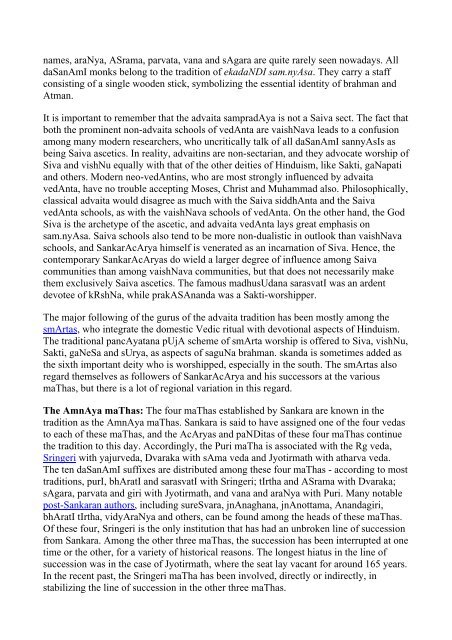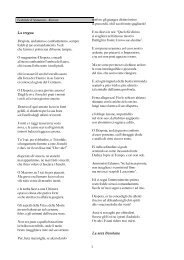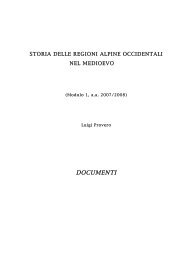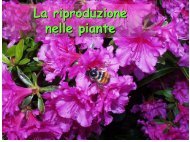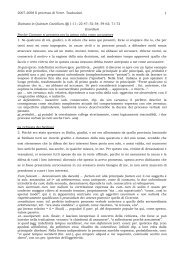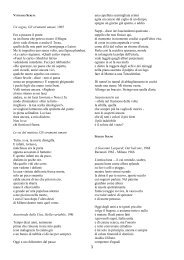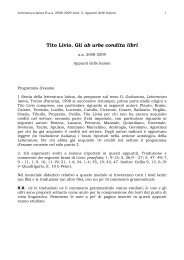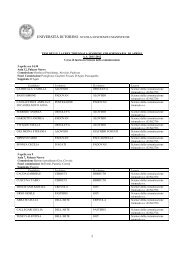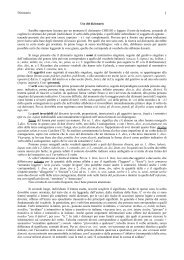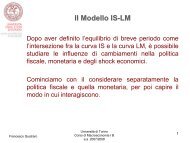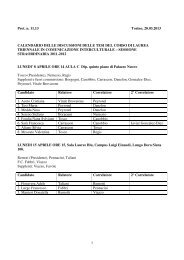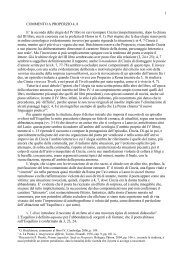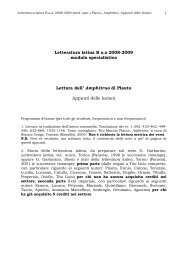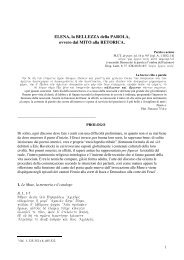ajAti vAda
ajAti vAda
ajAti vAda
Create successful ePaper yourself
Turn your PDF publications into a flip-book with our unique Google optimized e-Paper software.
names, araNya, ASrama, parvata, vana and sAgara are quite rarely seen nowadays. All<br />
daSanAmI monks belong to the tradition of ekadaNDI sam.nyAsa. They carry a staff<br />
consisting of a single wooden stick, symbolizing the essential identity of brahman and<br />
Atman.<br />
It is important to remember that the advaita sampradAya is not a Saiva sect. The fact that<br />
both the prominent non-advaita schools of vedAnta are vaishNava leads to a confusion<br />
among many modern researchers, who uncritically talk of all daSanAmI sannyAsIs as<br />
being Saiva ascetics. In reality, advaitins are non-sectarian, and they advocate worship of<br />
Siva and vishNu equally with that of the other deities of Hinduism, like Sakti, gaNapati<br />
and others. Modern neo-vedAntins, who are most strongly influenced by advaita<br />
vedAnta, have no trouble accepting Moses, Christ and Muhammad also. Philosophically,<br />
classical advaita would disagree as much with the Saiva siddhAnta and the Saiva<br />
vedAnta schools, as with the vaishNava schools of vedAnta. On the other hand, the God<br />
Siva is the archetype of the ascetic, and advaita vedAnta lays great emphasis on<br />
sam.nyAsa. Saiva schools also tend to be more non-dualistic in outlook than vaishNava<br />
schools, and SankarAcArya himself is venerated as an incarnation of Siva. Hence, the<br />
contemporary SankarAcAryas do wield a larger degree of influence among Saiva<br />
communities than among vaishNava communities, but that does not necessarily make<br />
them exclusively Saiva ascetics. The famous madhusUdana sarasvatI was an ardent<br />
devotee of kRshNa, while prakASAnanda was a Sakti-worshipper.<br />
The major following of the gurus of the advaita tradition has been mostly among the<br />
smArtas, who integrate the domestic Vedic ritual with devotional aspects of Hinduism.<br />
The traditional pancAyatana pUjA scheme of smArta worship is offered to Siva, vishNu,<br />
Sakti, gaNeSa and sUrya, as aspects of saguNa brahman. skanda is sometimes added as<br />
the sixth important deity who is worshipped, especially in the south. The smArtas also<br />
regard themselves as followers of SankarAcArya and his successors at the various<br />
maThas, but there is a lot of regional variation in this regard.<br />
The AmnAya maThas: The four maThas established by Sankara are known in the<br />
tradition as the AmnAya maThas. Sankara is said to have assigned one of the four vedas<br />
to each of these maThas, and the AcAryas and paNDitas of these four maThas continue<br />
the tradition to this day. Accordingly, the Puri maTha is associated with the Rg veda,<br />
Sringeri with yajurveda, Dvaraka with sAma veda and Jyotirmath with atharva veda.<br />
The ten daSanAmI suffixes are distributed among these four maThas - according to most<br />
traditions, purI, bhAratI and sarasvatI with Sringeri; tIrtha and ASrama with Dvaraka;<br />
sAgara, parvata and giri with Jyotirmath, and vana and araNya with Puri. Many notable<br />
post-Sankaran authors, including sureSvara, jnAnaghana, jnAnottama, Anandagiri,<br />
bhAratI tIrtha, vidyAraNya and others, can be found among the heads of these maThas.<br />
Of these four, Sringeri is the only institution that has had an unbroken line of succession<br />
from Sankara. Among the other three maThas, the succession has been interrupted at one<br />
time or the other, for a variety of historical reasons. The longest hiatus in the line of<br />
succession was in the case of Jyotirmath, where the seat lay vacant for around 165 years.<br />
In the recent past, the Sringeri maTha has been involved, directly or indirectly, in<br />
stabilizing the line of succession in the other three maThas.


